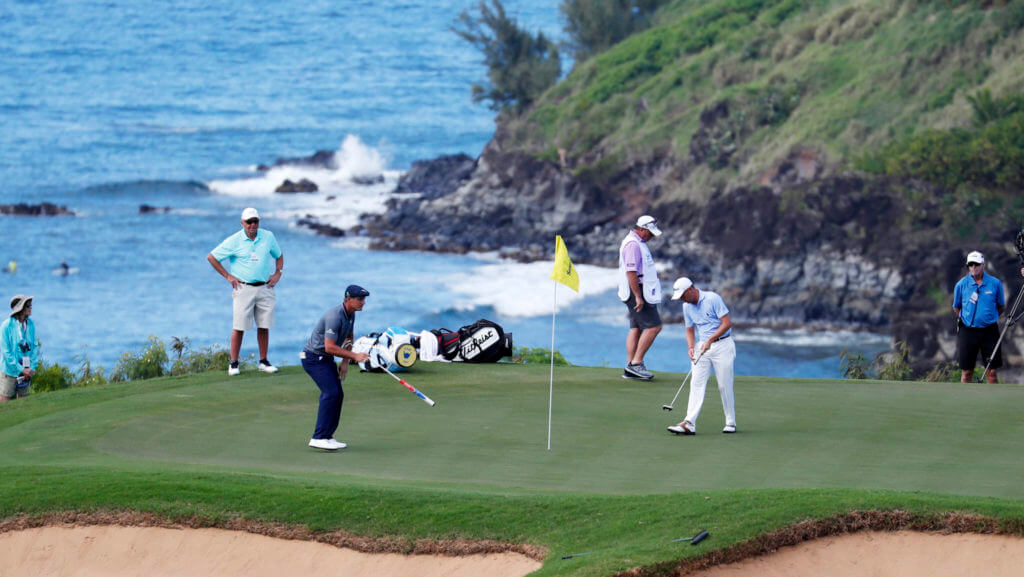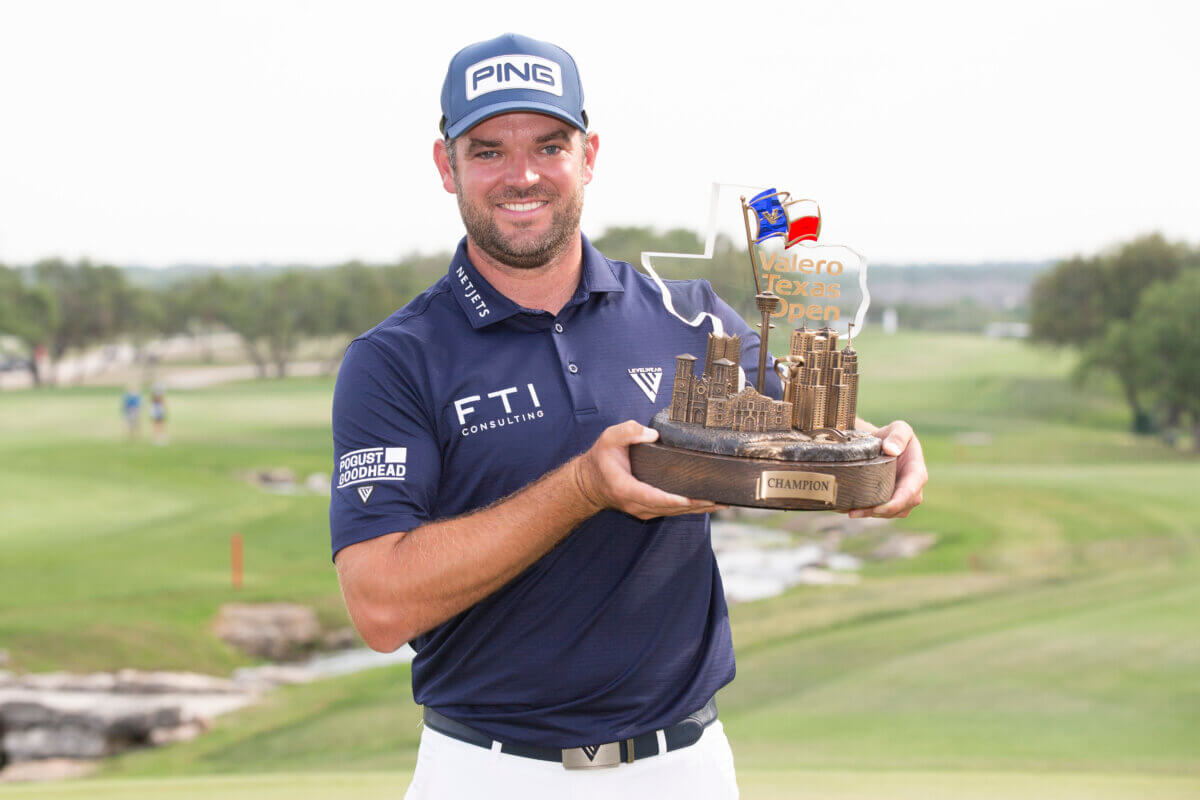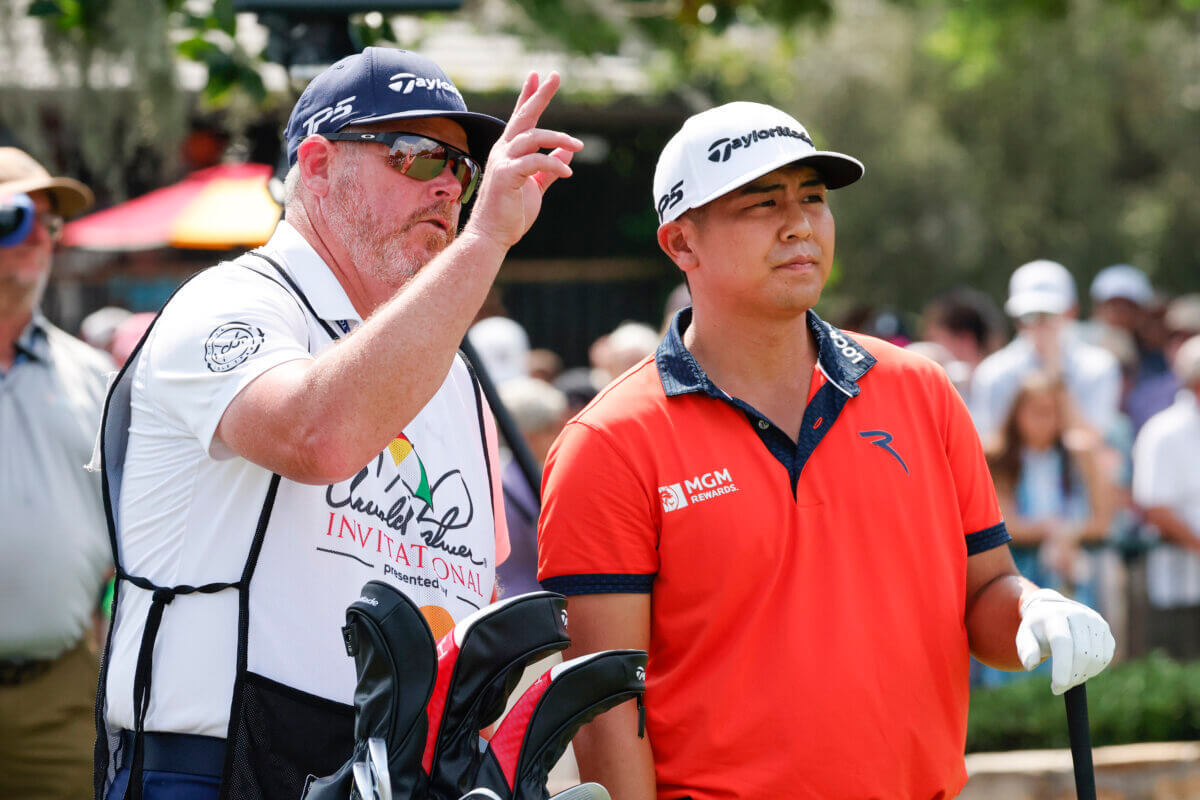Hawk’s Eye: Flagstick vs. No Flagstick — is there really a difference?

My New Year’s resolution was to putt with the flagstick in, but as was the case when I vowed to quit eating cheesecake or stop smoking stuff grown in other countries, this pledge has little chance of surviving. Never mind that the USGA recently made it legal to leave the pole in the hole once you board the putting surface.
Why was it ever illegal to begin with?
Who decided that failing to remove the flagstick amounted to a competitive advantage?
Is it OK to putt with the flagstick at half mast?
Why do I even bother trying to figure out the USGA?
RELATED: A year later, caddies recall false alarm ‘missile alert’ during Sony Open
I suppose it makes a PGA Tour caddie’s job easier, given that he might have just finished raking a bunker and now has to wipe the sand off the ball, write something down in his notebook and help his man read the green. Of course, caddies at the highest level work as a cohesive unit during tour events, assisting each other when a man has too much on his plate, but it’s not like the rule was changed so caddies have one less thing to do.
Bryson DeChambeau and Adam Scott are among the notable tour pros who have committed to leaving in the flagstick on a regular basis. “Even if it’s a six-footer to win the Masters,” said Scott, whose putting issues over the years have prevented a very good player from becoming a great one. DeChambeau was a physics major at Southern Methodist, so it’s no surprise that his scientific sensibilities have made him a proponent of the pin.
Putting with the flagstick in is like shaving with your glasses on. It might help you a couple of times a year, but it’s still an exercise based purely on feel.
I’m not about to question DeChambeau on the finer points of coefficient of restitution in fiberglass cylinders. I also can’t help but think this is much ado about nothing. As I said earlier this week on the Hawk & Rude podcast, putting with the flagstick in is like shaving with your glasses on. It might help you a couple of times a year, but it’s still an exercise based purely on feel.
Who’s to say a 25-footer wouldn’t have gone in if the pin had been pulled? Flagsticks have been known to treat some of the world’s best players very cruelly over the years. Sergio Garcia blamed one at Carnoustie for costing him the 2007 British Open. David Duval once struck a brilliant approach at TPC Sawgrass that suffered a particularly evil carom and hopped into the water.
Then there was the 2013 Masters. Tiger Woods, second round, 15th hole. A third-shot wedge that lost a collision with the fiberglass and was sentenced to death by drowning. Woods’ subsequent illegal drop became the biggest non-call in sports, but a hearty dose of Twitter outrage led to it being rectified the following morning.
Tiger was penalized two shots. If you’re a tour caddie and your guy gets sucker-punched like that, I’m guessing there’s not a whole lot you can say. Shake it off? Go get ’em? There’s a pretty good chance you’ll end up in the water, too. If dog is man’s best friend, flagsticks probably don’t even make the top 50.
Let’s face it: a lot of really good players will do just about anything to hole more 20-footers. Scott is one of those guys who has tried it all, so his willingness to experiment makes as much sense as DeChambeau’s, maybe more. The SMU grad ranked 32nd in strokes gained putting last year and second from the crucial distance of 15 to 20 feet.
Most importantly, DeChambeau has won five tournaments in the last 18 months, which is another way of saying the dude can make putts while standing on his head. He doesn’t need to leave the flagstick in, but if it floats his boat, bon voyage. In a bold leap of analytical forecasting, the Golf Channel’s Brandel Chamblee has predicted that a majority of tour pros will be following DeChambeau’s lead by the end of the year.
I would be shocked if a third of the guys were doing it. Golf treasures its old-school ways, and if something ain’t broke, you not only don’t fix it, you avoid the urge to even mess with it. DeChambeau seems to pride himself on being different, while Scott probably just needs to petition the USGA to widen the hole, but most tour pros like their beer cold, their steak medium-rare and their caddies to pull the plug when it’s time for yet another birdie putt.
That’s the way it has been. And with a few notable exceptions, the way it will always be.
All views expressed in this column are those of John Hawkins and do not necessarily reflect those of the Caddie Network.






